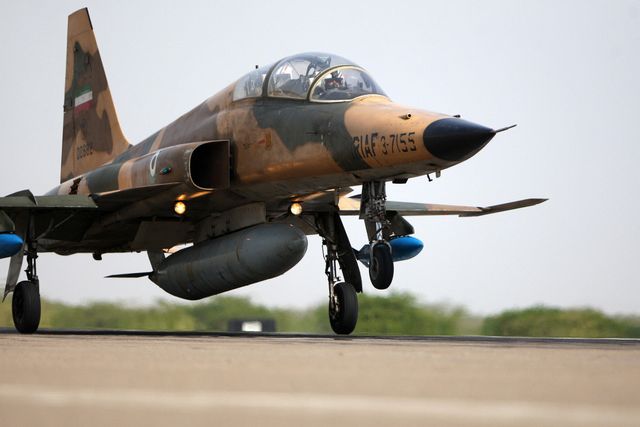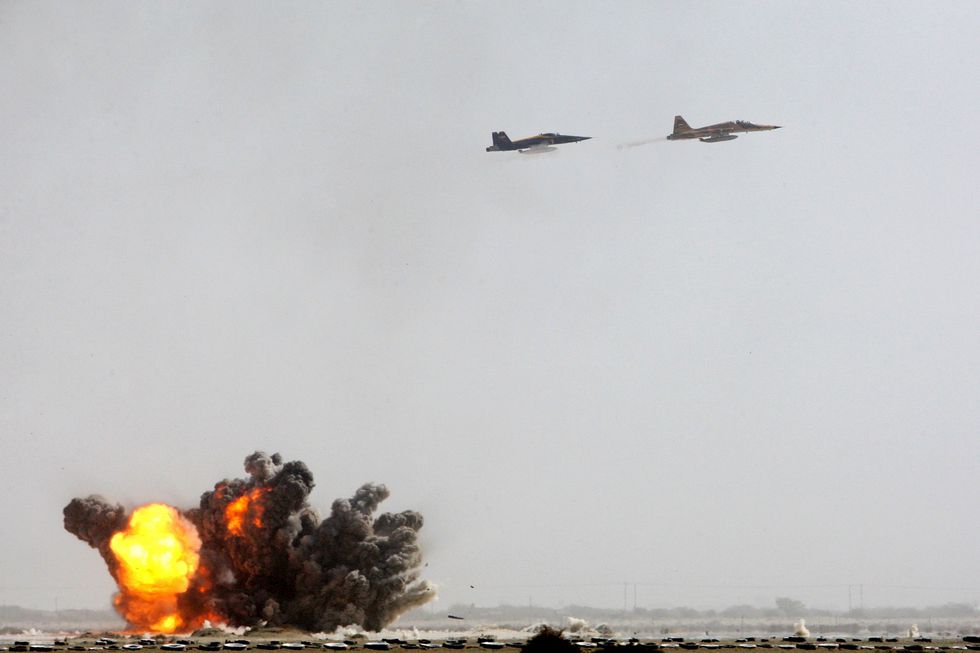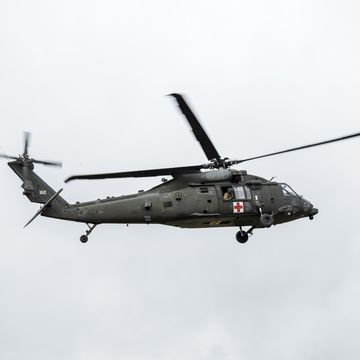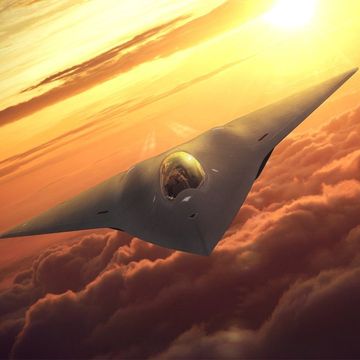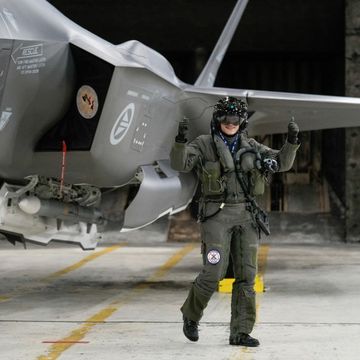Iran is flying antiques.
It's not the only one. After all, we've covered the travails of America's rapidly aging Air Force, such as the fact that airmen could fly and maintain the same B-52s as their grandfathers. But at least the Pentagon has new tech and new planes in the pipeline.
The Iranian military is in a stickier predicament. Political isolation, combined with an unwillingness by many countries to sell Iran new equipment, means its fleet fighters bought in the mid-1970s—from the United States, no less—must fly on for the foreseeable future, with homegrown know-how the main thing keeping them airworthy.
Ally to Enemy
In the 1970s, Iran was a staunch ally of the United States. Ruled by the Shah and financed by oil wealth, Iran purchased huge quantities of American equipment including 166 Northrop F-5E/F Tiger II jets. Based on the F-5A/B Freedom Fighter, the Tiger II was capable of both air-to-air and air-to-ground missions. A relatively low-cost, low-maintenance fighter designed for export to America’s allies, the Tiger II was similar to today’s F-16 Fighting Falcon. The plane is obsolete by today’s standards.
The 1979 islamic revolution in Iran radically upset the country’s relationship with the United States. Following the overthrow of the Shan and the Iranian hostage crisis, Washington quickly went from ally to enemy.
That presented a serious problem for the country’s military. Largely using American equipment, but regarding America as an enemy, Iran’s armed forces have struggled to keep the military machine going.
Reverse-Engineering the Present, Cannibalizing the Past
The story of Iran’s Tiger IIs may be the most telling example. According to Aviation Week & Space Technology, the Islamic Republic of Iran Air Force still operates 44 F-5Es (single seat jets) and 15 F-5Fs (two seat combat-capable trainers). In the 2000s, Iran’s government instructed the military, government, and even academic world to modernize the jets to a new standard to keep them flying. As a result, today Iran can build most of the parts that make up a Tiger II, but not all of them. It appears the country still has to recycle some parts from Tiger IIs no longer flying.
AWST reports that Iran’s government coordinated a Tiger II upgrade effort that ended up involving “10 top Iranian universities, 72 privately run companies, 44 suppliers and 63 science and research foundations.” Today, the Iranian Turbine Industries Organization can build its own General Electric J85-GE-21 afterburning turbojet engines, the original engine that powers the Tiger II, making 80 percent of the parts. The remaining 20 percent of parts are American-made real General Electric parts likely predating the 1979 revolution.
Iran is now able to produce its own F-5F two-seater jets—mostly. The country can build almost all of the jet, with the exceptions of 5 percent of its avionics systems and 25 percent of its other components. The remaining parts are either purchased on the open market or cannibalized from non-operational Tiger IIs, of which Iran has nearly 100.
The new, modernized F-5Fs have a weird, cobbled-together list of features. The jet uses both GPS and the Russian GLONASS system for navigation. While using GLONASS makes sense, given Iran’s hostility to the United States, the fact that the jet still has GPS is a bit puzzling. The radar set is an Iranian copy of a Chinese copy of an Italian radar. Short-range missile armament includes pre-revolution AIM-9J Sidewinders and Chinese air-to-air missiles.
Iran may some day buy new fighter jets, but until the regime’s political isolation ends, the country’s air force simply must make do.
Read more at Aviation Week & Space Technology.

Kyle Mizokami is a writer on defense and security issues and has been at Popular Mechanics since 2015. If it involves explosions or projectiles, he's generally in favor of it. Kyle’s articles have appeared at The Daily Beast, U.S. Naval Institute News, The Diplomat, Foreign Policy, Combat Aircraft Monthly, VICE News, and others. He lives in San Francisco.
